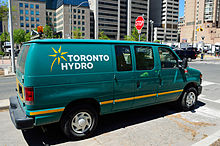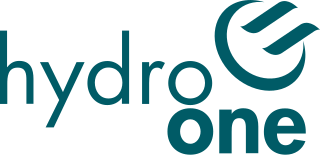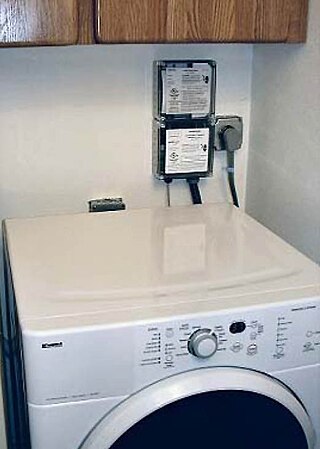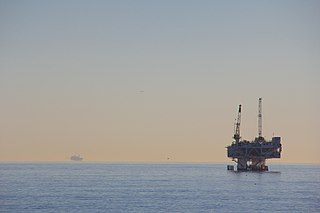History
Toronto Hydro has been serving the city of Toronto for over a century.
1910s: Electricity first came to Toronto in the late 1880s. A number of private companies were formed to meet demand. In 1908, Torontonians voted overwhelmingly for the formation of a municipal electricity company. Toronto Hydro-Electric System was introduced on May 2, 1911 at Old City Hall.
1920s: Toronto Hydro merged with the private electricity companies in the 1920s, leading to a 95 per cent increase in the number of meters and a 200 per cent increase in the kilowatt-hours (kWh) sold. Further demand came from an approximately 50 per cent rise in appliance sales.
1930s: Demand for electricity decreased for the first time during the Depression. In order to protect jobs, unionized workers agreed to reduce their work hours to 40 hours per week. While some layoffs were necessary, those jobs were offered back to employees when electricity consumption picked up in 1940.
By Toronto's centennial in 1934, the city had approximately 920 kilometres (km) of paved streets, 880 km of which were lit by electricity. In 1937, Toronto Hydro sold more than 1 billion kWh of electricity for the first time in its history.
1940s: During the Second World War, Toronto Hydro appealed to its customers to conserve energy. Electricity consumption for signs, show-windows, displays and advertising was banned. Street lighting was reduced by approximately 20 per cent and daylight saving time was extended throughout winter to reduce the afternoon peak electrical load. The increased efficiency created a profit that Toronto Hydro passed down to its customers in temporary rate reductions.
1950s: Between 1945 and 1955, Toronto's kWh consumption increased by 75 per cent. This was due to the post-war baby boom and increased immigration. Toronto Hydro raced to keep up, building 12 new electrical substations throughout the city. The electrical system was converted from 25 Hertz (cycles per second) to 60 Hertz, and over 200,000 meters were replaced.
1960s: The convenience of electricity was heavily promoted. As a result, electricity use grew at home and in the workplace. Between 1964 and 1974, Toronto Hydro spent more than $31 million to put overhead wires and transformers underground.
1970s: As environmentalism grew, Toronto Hydro introduced a variety of energy conservation programs and incentives to customers.
The building boom of the late 1960s meant that in 1970, Toronto Hydro's peak load increased 5.6 per cent over the previous year. New additions to the Toronto skyline, including the CN Tower, First Canadian Place, the Royal Bank Plaza and Hydro Place, added over 44,500 kW of demand to the grid.
1980s: In the 1980s, Toronto Hydro became the largest municipal electricity distribution utility in Canada. The organization introduced a customized Supervisory Control and Data Acquisition system (SCADA), which enabled operators to accurately and remotely monitor the distribution system.
As Toronto Hydro moved to digital, other organizations followed suit. The introduction of desktop computers, printers, networks and photocopiers meant additional demand.
1990s: On January 1, 1998, Bill 103 amalgamated six municipal electric utilities into one, nearly tripling Toronto Hydro's customer base to approximately 650,000 customers.
In January 1998, approximately 350 employees helped restore power following the ice storm in eastern Ontario and southern Quebec. Crews worked 12 to 20 hours a day and coped with harsh conditions and unfamiliar equipment. In 1999, the City of Toronto became Toronto Hydro's sole shareholder when the utility incorporated.
2000s: In 2001, Toronto Hydro began powering 100 vehicles with low-sulphur diesel and soy-based biodiesel fuel.
In December 2002, Toronto Hydro built a 65-metre tall wind turbine at Exhibition Place in partnership with the Toronto Renewable Energy Co-operative (TREC). Toronto Hydro launched its first smart meter projects in 2005 to approximately 500 customers, and, in 2010, started transitioning customers to Time-of-Use rates to help them better manage their electricity bills.
2010s: In 2011, Toronto Hydro launched various social media channels, which has given its customers the ability to interact with the organization in a variety of convenient ways.
In 2013, Toronto Hydro started construction on the new Clare R. Copeland Transformer Station, the first underground station in downtown Toronto.
In 2015, Toronto Hydro unveiled Hydrostor, the world's first underwater compressed air energy storage system, located three kilometres off Toronto Island. This “underwater battery” stores electricity when demand is low and can be released when the grid needs a boost.
In 2016, Toronto Hydro installed the world's first pole-top energy storage unit. The unit's lithium-ion batteries charge during off-peak hours and then discharge energy to Toronto Hydro's grid during peak hours.
In 2017, Toronto Hydro launched PowerLens®, an online platform allowing customers to view how their homes use electricity so that they can take steps towards conservation and saving.
The Ontario Energy Board approved Toronto Hydro's 2015-2019 rates application. Over this five-year period, Toronto Hydro has secured more than $2 billion in capital funding that it will use to meet the growing demand for electricity, to safeguard against extreme weather events and upgrade aging infrastructure.












